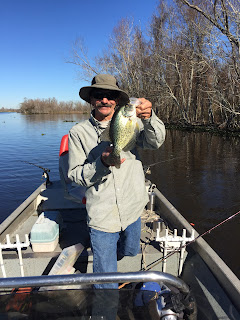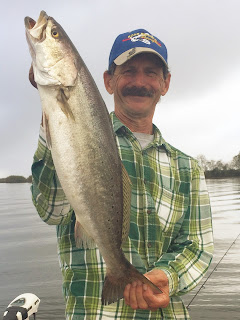Marsh Basics For More Crappie
Fishing the "marsh" is a totally different dynamic than fishing lakes or rivers. The marsh is unique in its own way. Typically the water is shallow, compared to other places, running an average of 5-8 feet. Understanding the different phases the marsh goes through will help you catch more fish. Summertime patterns differ from fall and winter in that there are grass lines or beds, which will be the best places to target. Early fall can be the same, but when the grass dies off or for any reason is no longer available to fish, the tactics change. Fishing grass lines are usually better with a jig and cork, although tossing a beetle spin works well also. Broken patches or irregular features in the grass seem to produce more fish. However, there are always exceptions. Sometimes just finding holes in heavy weeded areas will produce and there are times if crappie are chasing shad, the middle of the canal will produce. For the live bait users, minnows or grass shrimp are the baits of choice. Most canals of south Louisiana are oilfield dredged and may have wellheads along or at the ends of the canal. These also provide good places for crappie to hang around. Tight-lining around these may produce fish when other places are not producing. Fall and winter patterns may include fishing points, structures such as fallen trees or the many reeds along the bayou. Cold or muddy water tends to push the fish further back into canals, especially dead ends. Never over look the main part of the canals. Many folks run to the back of the dead ends, bypassing a lot of area that hold fish. Late winter into early spring, the fish may move into spawn. These are the easiest times to catch great numbers of fish. The crappie move up right against the bank. The key is to not fish too deep. If the fish are in 1 foot of water and you are fishing 2 foot deep, you may be fishing out of the strike zone. Just like any fishery the males become very aggressive, while protecting the nest and will bite just about anything you toss at them. Many times throughout the day the females will move in and drop their eggs and move off again. If a canal is lined with standing trees, these are great places to catch spawning fish. I advocate catch and release during the peak of the spawn. Keep what you need and release the rest for future stocks. It is just as important to let the males go as the females to protect the nest. This is never a popular idea but an important one on the waters where fishing pressure is immense. The one key factor to fishing the marsh, is to find stained to clear water. Muddy water may be good for the Grenadas (a world class crappie lake , located in Mississippi) of the fishing world, but tough for the marsh. Never over look the drop offs. Many folks will cast toward the bank and work the bait out from there. This is the most common tactic, but your boat may be sitting on top of the fish. If the bank is not producing try tight-lining where the bank drops off. It could be from 5 feet off to almost the middle of the bayou. Some days, it pays off big time. It may be the difference from coming home empty handed or catching a nice mess of crappie. Another sure bet for fishing the marsh is moving water. Usually falling water is a trigger. it pulls the clear water out of the marsh into the bayous, which creates a feeding frenzy for the fish. This is true year round. So the next time you are fishing one of the beautiful bayous of South Louisiana, think about where the fish may be; could be grass beds, lay-downs, standing trees, wellheads, suspended in open water or spawning a foot from the bank. Good luck fishing, hope to see ya on the water.




Like it Bob
ReplyDelete